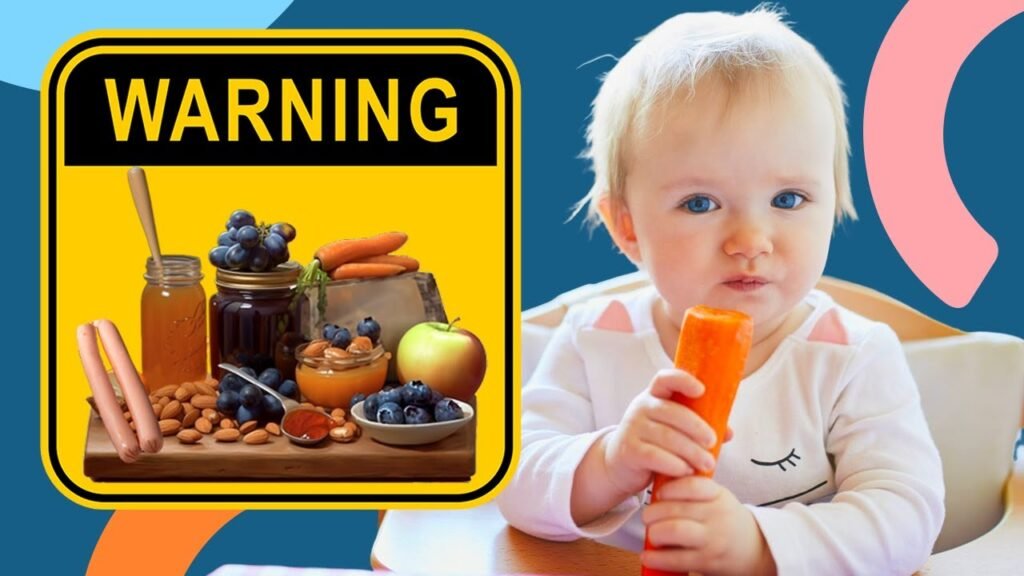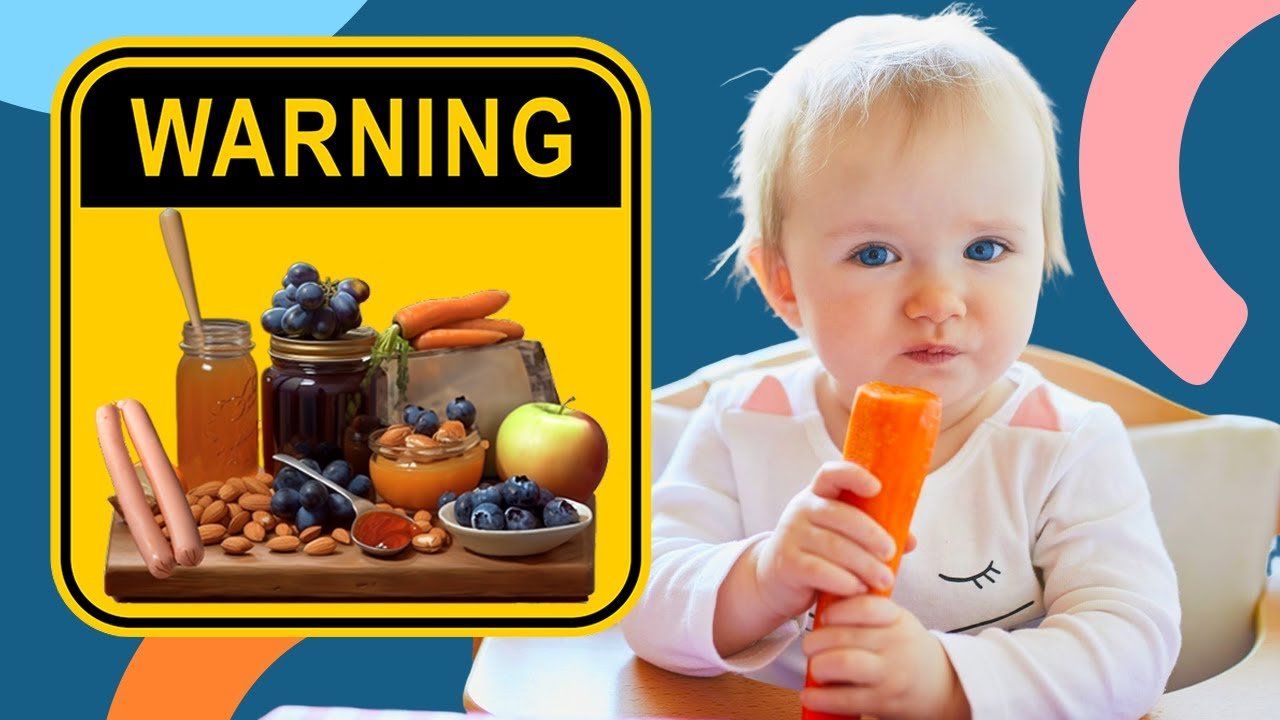If you’re considering using baby-led weaning to introduce solids to your baby, you may already be aware of the potential risk of choking. However, recent research suggests that the choking risk can be mitigated if parents are educated on which foods pose a significant choking risk for babies and avoid them. In this article, we will explore some common foods that should be avoided during baby-led weaning, including nut butter, raw apples and vegetables, whole grapes, blueberries, cherry tomatoes, seeds and nuts, hot dogs, and honey. By understanding and avoiding these foods, you can ensure the safety of your baby during mealtime and make the baby-led weaning journey a smooth and enjoyable one.
Baby-led weaning has gained popularity as a method for introducing solids to babies, but it’s important to be aware of potential choking hazards. Many common foods can pose a significant risk if not properly prepared or avoided altogether. In this article, we will delve into the specific foods that should be on your baby-led weaning blacklist, including nut butter, raw fruits and vegetables, whole grapes, blueberries, cherry tomatoes, seeds and nuts, hot dogs, and honey. By understanding the potential dangers associated with these foods and taking appropriate precautions, you can ensure a safe and successful introduction of solids to your baby’s diet.

Baby-Led Weaning: A Safe Method for Introducing Solids to Babies
If you’re considering baby-led weaning as a method for introducing solids to your baby, it’s important to be aware of potential choking hazards. While this approach can be a great way to encourage independent eating and exploration of different textures, there are certain foods that pose a higher risk of choking. In this article, we will discuss common choking hazards, fruits to watch out for, the dangers of nut butter, and other potential choking hazards. We will also cover the importance of avoiding honey and ensuring your baby’s safety during mealtime by adjusting the high chair. By being aware of these risks and taking necessary precautions, you can safely introduce solids to your baby using the baby-led weaning method.
Common Choking Hazards
Introduction to Choking Hazards
Choking is a serious concern when introducing solids to babies, regardless of the feeding method being used. However, with baby-led weaning, it is crucial to be mindful of the size, shape, and texture of foods in order to minimize the risk of choking. Babies have not yet fully developed their oral motor skills and may struggle to manipulate and swallow certain foods.
Choking Hazards in Common Foods
There are several common foods that can pose a choking hazard to babies. One major concern is nut butter, which can be sticky and difficult for babies to move around in their mouths or swallow safely. To minimize the risk, it is recommended to thin out nut butter with a bit of water or breast milk to create a smoother consistency.
Raw apples and vegetables are also potential choking hazards for babies. Without molars to grind and break down large chunks of food, babies can struggle to properly chew and swallow these hard and crunchy fruits and vegetables. It is important to cook them until they are soft enough to be easily mashed with the pinch test.
Another set of fruits that should be avoided are whole grapes, blueberries, and cherry tomatoes. These small fruits are difficult for babies to manage and place in their mouths due to their size and slippery surface. Additionally, their round shape closely matches the size and shape of a baby’s airway, increasing the risk of choking. To make these fruits safer for babies to eat, they should be cut into quarters or smaller pieces.
Nut Butter as a Choking Hazard
While nut butter can be a nutritious choice for older children and adults, it can be a choking hazard for babies. The stickiness of nut butter can make it difficult for babies to manipulate and swallow safely. If a baby tries to swallow a large glob of nut butter without processing it properly, it could potentially get stuck in their throat and block their airway. To reduce this risk, it is recommended to thin out nut butter with a liquid to create a smoother consistency before offering it to your baby.
Fruits to Watch Out For
Challenges with Handling Small Fruits
When practicing baby-led weaning, it is important to be aware of the challenges that small fruits can present. Fruits like grapes, blueberries, and cherry tomatoes are difficult for babies to handle due to their small size and smooth, slippery surface. At this stage, babies are still developing their fine motor skills and may use their whole hand to grab food, making it difficult to pinch and place the fruit in their mouths.
Reducing Choking Risk with Small Fruit Pieces
To reduce the risk of choking, it is crucial to cut up small fruits into smaller, more manageable pieces. Simply cutting these fruits in half may not be enough, as the size can still pose a choking risk. By cutting them into quarters or smaller pieces, you are making them safer for your baby to eat. This allows them to more easily manipulate and chew the fruit without the risk of it becoming lodged in their throat.
Other Potential Choking Hazards
In addition to the common foods mentioned above, there are other potential choking hazards to be aware of. Whole seeds and nuts, such as almonds or sunflower seeds, are hard for babies to chew and break down with their gums alone. This increases the risk of babies swallowing them whole, which can lead to a choking incident. It is important to ensure that seeds and nuts are finely ground or avoided altogether until your baby is able to chew and handle them safely.
Hot dogs are also a notable choking hazard for babies. The cylindrical shape of hot dogs can block a baby’s airway if they accidentally inhale or swallow it. Additionally, the smooth outer skin of hot dogs can be tough and slippery, making it difficult for babies to break them down and manipulate them in their mouths. It is best to avoid giving hot dogs to babies until they are older and have developed the necessary chewinng skills.
Avoiding Honey
While not related to choking hazards, it is important to mention that honey should be avoided for babies under one year of age. Honey can contain spores of a bacteria that can produce a toxin called infant botulism, which can lead to a serious and potentially life-threatening illness. Babies under one year of age have immature digestive systems that are more susceptible to this illness. It is best to wait until after their first birthday to introduce honey to your baby.
Ensuring Baby’s Safety during Mealtime
In addition to being aware of potential choking hazards, it is crucial to ensure your baby’s safety during mealtime. One important aspect is adjusting the high chair to fit your baby’s size and height. Many high chairs are designed for larger children and may be too big for babies, leading to discomfort and distractions while eating. By adjusting the high chair to fit your baby properly, you can help them stay focused on the task of eating and reduce the risk of choking.
Adjusting the High Chair
To adjust the high chair, start by checking the seat height. Your baby’s feet should be able to touch the footrest or the floor comfortably. If the high chair is too tall, you can use a cushion or folded towel to raise your baby’s seating position. On the other hand, if the high chair is too low, you can use a cushion or booster seat to raise your baby’s seating position.
Next, check the seat depth. The seat should be deep enough to provide support and prevent your baby from sliding forward. If the seat is too shallow, you can use a rolled-up towel or cushion to provide additional support.
Finally, ensure that the high chair has a secure and sturdy harness or safety strap to keep your baby in place during mealtime. This will prevent them from leaning or sliding out of the chair, reducing the risk of choking.
By taking these simple steps to adjust the high chair, you can create a safe and comfortable eating environment for your baby.
Conclusion
Baby-led weaning is a popular method for introducing solids to babies, but it is important to be aware of potential choking hazards. Foods like nut butter, raw apples, raw vegetables, small fruits, whole seeds and nuts, and hot dogs can all pose a choking risk to babies. Additionally, honey should be avoided for babies under one year of age due to the risk of infant botulism. By being aware of these risks and taking necessary precautions, such as cutting up foods into smaller pieces and adjusting the high chair, you can safely introduce solids to your baby using the baby-led weaning method. Remember, always supervise your baby during mealtime and seek professional medical advice if you have any concerns about their safety or development.

